Moniek Bloks's Blog, page 138
August 28, 2021
Marie, Princess of Liechtenstein laid to rest
Marie, Princess of Liechtenstein, was laid to rest following a service in St. Florin’s Cathedral.
The Princely Family of Liechtenstein was well represented at the funeral service today, with most senior members of the family in the front row seats. Royal guests of reigning houses included Queen Sofia of Spain and Princess Caroline of Monaco, seen on the other side of the aisle.
 (Screenshot/Fair use)
(Screenshot/Fair use)The service was for invited guests only, as there was not enough space in the cathedral, and some of the guests had to follow the service in Vaduz Hall. In addition, sections of the town were closed for all traffic for security reasons.
 Prince Joseph Wenzel (Screenshot/Fair use)
Prince Joseph Wenzel (Screenshot/Fair use)The service was led by Archbishop Wolfgang Haas and Feldkirch’s Bishop Benno Elbs. The sermon was delivered by Monsignor Leo Maasburg, a close friend of the Princely Family and Princess Marie. The church choir Vaduz and the Vaduz Harmoniemusik provided the music for the service. The Vaduz fire brigade acted as pallbearers. In addition, several of Princess Marie’s grandchildren spoke, including the future Prince of Liechtenstein, Prince Joseph Wenzel.
The guests were invited to the rose garden at Vaduz Castle after the funeral. Princess Marie’s coffin was carried to the vault after the service, where she will be interred.
 (Screenshot/Fair use)
(Screenshot/Fair use)Marie, Princess of Liechtenstein, died on 21 August 2021, following a stroke a few days earlier. She is survived by her husband, Hans-Adam II, Prince of Liechtenstein, their four children and fifteen grandchildren.
The post Marie, Princess of Liechtenstein laid to rest appeared first on History of Royal Women.
August 26, 2021
Book Review: Jane Parker: The Downfall of Two Tudor Queens? by Charlie Fenton
*review copy*
This book is a new release and the first book by Charlie Fenton published by Chronos Books of John Hunt Publishing and retails at £6.99.
The author Charlie Fenton runs a blog called Through the Eyes of Anne Boleyn as well as studying Medieval and Early Modern history; this background knowledge and love for this era shines through in her writing, and you can tell she has a passion for this topic. This is a short book – at just under 70 pages, it is more like a long essay, really. However, the work is fully referenced and has been well researched, utilising any available original sources. This book is part of the Chronos Crime Chronicles series, which are short tales on murders, conspiracies and trials and so will interest those who enjoy either historical works or the true crime genre.
While sticking to the relatively low maximum word count of the Chronos Crime Chronicles series, I must say Charlie Fenton has packed a lot of information in without it feeling like she has missed out on anything important or cut corners. The book is written in a way that flows beautifully and is very easy to read, making it difficult to put down. Charlie has one aim with the book, and that is to try to clear the name of Jane Parker, and throughout the book, she reiterates this point and backs it up with different sources and references to other works.
Jane Parker was the wife of George Boleyn; when she married him, he was part of an important noble family, but he was not in the limelight, and Jane was happy at court serving Queen Katherine of Aragon. Over time though, Jane’s life was changed dramatically when her sister-in-law Anne Boleyn became Queen of England. For some time, we see how the Boleyn faction benefitted from this connection, but when Anne and her brother George were later executed for treason, this was devastating to Jane and her reputation. In a number of works published long after the events took place, Jane is often blamed for suggesting that George and Anne Boleyn were committing incest together and other such rumours. In this book, Fenton digs into this and questions why Jane would want to ruin her own husband’s reputation and cause his execution.
Many of the rumours about Jane seem to stem from her involvement in a much later scandal. In the book, we see how Jane served Anne of Cleves and Jane Seymour and tried to repair her own reputation at court. When King Henry VIII was married for a fifth time to the teenage Katherine Howard, however, Jane is yet again dragged into scandal. By this stage, Jane was living off money provided by her former father-in-law, she was forever known as the wife of a traitor, and her protector Lord Cromwell had been executed. Jane was no longer part of a powerful faction at court, and Charlie Fenton aims to show that while Jane did help Katherine Howard take part in an affair, she may have had little choice. Sources from later in the Tudor period blamed Jane for setting up the affair between Howard and Culpepper, but Fenton’s belief is that Jane found herself trapped in a difficult situation and had no way out.
At the end of the book, we hear the sad tale of Jane’s downfall and death, and the author goes on to say that she hopes in the future the myths surrounding Jane will be corrected. My only issue with this ending statement is that Charlie Fenton has just spent the entire book discussing and picking apart these myths, and so I wonder how else will the myths be corrected if this hasn’t done it? I’m not sure if this is a lack of self-confidence on the part of the author, or maybe she is saying she herself will one day write a longer book on the topic.
Fenton has put a lot of effort into backing up her idea that Jane Parker has been used as a scapegoat in the downfall of Anne Boleyn and Katherine Howard, which does seem true to an extent from the sources and analysis available. The only real problem is that there are not that many sources available on Jane or in her own words, and the few that do exist do tend to prove that Jane did play an instrumental part in at least the downfall of Katherine Howard. However, it was unlikely to have been intentional. I do think that the author somewhat ignores or dismisses a lot of these sources and is biased towards Jane Parker; of course, much of what has been said of Jane is exaggerated, but her execution for treason was for a valid reason.
This book is a great overview of the downfalls of Anne Boleyn and Katherine Howard and gives great insight into the life of Jane Parker, a Tudor woman with a tragic and often overlooked life story. I’d recommend this to anyone who likes true crime stories or has an interest in the Tudor court, and I’ll be keeping an eye out for what comes next from Charlie Fenton after a good first book.
Jane Parker: The Downfall of Two Tudor Queens? by Charlie Fenton is available now in both the UK and the US.
The post Book Review: Jane Parker: The Downfall of Two Tudor Queens? by Charlie Fenton appeared first on History of Royal Women.
August 25, 2021
Spencer – Official Teaser Trailer
The first official teaser trailer for the 2021 film Spencer has just been released. Spencer stars Kristen Stewart as Diana, Princess of Wales, and it is set during the Christmas festivities at the Queen’s Sandringham Estate, where she decides to end her marriage to Prince Charles.
In theaters November 5thThe post Spencer – Official Teaser Trailer appeared first on History of Royal Women.
August 24, 2021
Royal Wedding Recollections – Mette-Marit Tjessem Høiby & Crown Prince Haakon of Norway
On 25 August 2001, Crown Prince Haakon of Norway married Mette-Marit Tjessem Høiby in Oslo Cathedral. They had met in 1999 through mutual friends but the match was not without controversy. Mette-Marit already had a four-year-old son named Marius from a previous relationship and she had reportedly used drugs and was a heavy partier. Haakon and Mette-Marit lived together during their engagement, which led to disapproval from the Church of Norway and a record low approval rating for the monarchy.
Embed from Getty ImagesShortly before the wedding, Mette-Marit spoke out, “My youthful rebellion was much stronger than many others. That resulted in me living quite a wild life. I would like to take this opportunity to say that I condemn drugs… I hope that I can now avoid talking more about my past and that the press will respect this wish. I cannot make these choices again, even though I would wish I could.”1 The interview led to a higher approval rating.
Embed from Getty ImagesOn her wedding day, Mette-Marit wore a dress of white silk crepe with a two-metre train, and a six-metre veil crowned by an antique bandeau tiara, while her future husband wore a black army uniform. Breaking with tradition, Haakon waited for her by the door of the Cathedral and walked with her down the aisle. Her little son acted as a page boy. She carried a long garland of leaves, with purple and white flowers.
After bowing and curtsying to King Harald and Queen Sonja, the couple took their seats. The bishop of Oslo, Gunnar Stålsett, told them, “Those born to be heir to a throne know what fate is all about. Only love can turn a duty into a gift.” Just before six p.m., the couple were pronounced husband and wife, after a ceremony with jazz music and readings by Haakon’s sister Princess Märtha Louise and Crown Princess Victoria of Sweden. Two 21-gun salutes celebrated the new husband and wife.
Embed from Getty ImagesThe crowd outside certainly did not disapprove of the union and a kiss was met with a cheer from the crowd. They returned to the palace in a Lincoln convertible where there would be a wedding banquet and ball. The newlyweds appeared on the palace balcony, together with her son Marius, whom she scooped into her arms.
Embed from Getty ImagesUpon marriage, Mette-Marit became known as Her Royal Highness Crown Princess Mette-Marit of Norway. The couple has two children now, Princess Ingrid-Alexandra (b.2004) (who will succeed her father) and Prince Sverre Magnus (b.2005).
The post Royal Wedding Recollections – Mette-Marit Tjessem Høiby & Crown Prince Haakon of Norway appeared first on History of Royal Women.
August 23, 2021
The Year of the Duchess of Windsor – Thelma, Viscountess Furness (Part two)
Her marriage with Marmaduke ended in 1933 in divorce on the grounds of adultery – his, not hers. Marmaduke had not wanted to cite a member of the royal family as a correspondent. The divorce did not mean that Thelma intended to marry the Prince; she held no such fantasies. In early 1934, Thelma travelled to the US to see her twin sister Gloria. According to Wallis, she asked, “I’m afraid the Prince is going to be lonely. Wallis, won’t you look after him?”1 According to Thelma’s memoirs, it was Wallis who initiated the topic with the words, “Oh, Thelma, the little man is going to be so lonely.” To which Thelma replied, “Well, dear, you look after him for me while I’m away.”2 Thelma sailed on 25 January 1934 – paving the way for Wallis to rise from friend to favourite.
On 22 March, Thelma returned from the United States, and on the journey back, she had seen much of Prince Aly Khan and rumours had found their way back to the Prince. She wrote in her memoirs, “Suddenly he said, ‘I hear Aly Khan has been very attentive to you.’ I thought he was joking. ‘Are you serious, darling?’ I asked. But the Prince did not answer me. At the Fort, the Prince, although formally cordial, was personally distant. He seemed to want to avoid me. I knew that something was wrong.”3
The following Easter weekend was spent at the Fort with Thelma and the Simpsons. Thelma wrote, “At dinner, however, I noticed that the Prince and Wallis seemed to have little private jokes. Once he picked up a piece of salad with his fingers, Wallis playfully slapped his hand… Wallis looked straight at me. And then and there, I knew the ‘reason’ was Wallis… I knew then that she had looked after him exceedingly well. That one cold, defiant glance had told me the entire story.”4 Thelma left the following morning. Soon after, Freda was cut from his life as well. The end of their relationship was brutal. Freda called St James’s Palace and was told, “I have orders not to put you through.”5 They never spoke again.
Embed from Getty ImagesThelma rebounded with Prince Aly Khan, and they jetted all around the world over the next few months. As this relationship cooled, Thelma rushed to the US to be by her sister’s side as she was fighting for the custody of her little namesake daughter. Gloria lost the custody battle, but Thelma supported her. In 1935, the sisters set up a fashion business, but it lost money from the start, and it eventually went bankrupt.
Embed from Getty ImagesThelma began to divide her time between London and New York, and she eventually managed to have an amicable relationship with her former husband, Marmaduke. He turned out to be quite ill with cirrhosis of the liver, and he died on 6 October 1940. A few months before, her stepson had gone missing in action and his body was never found, though he was found to have died in May 1940. Her stepdaughter Averill had died in 1936 of heart failure at the age of just 27. Thus when Marmaduke died, Thelma’s son became the next Viscount Furness.
Thelma, Anthony and Gloria began a new life in California. The twin sisters were soon the toast of society, and they lived the socialite life. Anthony had poor eyesight and bad health due to diabetes, and he never really fitted in. After turning 21, he took his seat in the House of Lords, and Thelma was there when he made his maiden speech. He became a Catholic and considered becoming a priest. He reportedly lived a celibate life after being turned down by a woman. Thelma continued to live with her sister, and they even wrote an autobiography together.
Embed from Getty ImagesGloria died on 13 February 1965 with Thelma by her side. Thelma herself died of a heart attack on 29 January 1970 on her way to the doctor. In her handbag, they found one of the teddy bears she used to exchange with the Prince of Wales. Thelma was buried with Gloria in the Holy Cross Cemetery in Culver City, Los Angeles.6 Her son never married or had children, and upon his death in 1995, the title went extinct.
The post The Year of the Duchess of Windsor – Thelma, Viscountess Furness (Part two) appeared first on History of Royal Women.
August 22, 2021
The Year of the Duchess of Windsor – Thelma, Viscountess Furness (Part one)
Thelma Furness, Viscountess Furness, was born on 23 August 1904 as Thelma Morgan, the daughter of Harry Hays Morgan Sr. and Laura Delphine Kilpatrick, in Switzerland. She had a twin sister named Gloria, a sister named Consuelo and a brother named Harry. From her father’s first marriage, she also had two half-sisters. Thelma and her twin Gloria were identical, though Thelma was later marked by a scar from roller-skating. Her father’s job – he was a diplomat – led the family all over the world. This also meant that she spoke English with a French/Spanish accent and that her education was rather all over the place.
When the First World War broke out, Thelma was in Spain with her mother and sister, and they were forced to leave. Her father was working in Hamburg at the time, and her mother went to him while Thelma and Gloria were sent to a French boarding school in England. They immediately took a dislike to England, and after returning to Germany for the summer holidays, they were moved to a boarding school in Switzerland. They were only there briefly when their parents decided to go to the United States. Thelma and Gloria had never been there and were determined to go with their parents. They eventually relented, and the girls went with them.
They arrived in New York in September 1916, where their striking looks attracted much attention. They were once again sent off to boarding school as their father continued his work. They would only see their mother four times over the next three years, and they became close to the head of the school, Reverend Mother Dammen. At the age of 17, they left the school and went to live together in an apartment in New York. This was an unusual arrangement, and while their parents were away – now in Brussels – their landlady kept an eye on them.
Embed from Getty ImagesThelma and Gloria fit right into the New York society and lived a sophisticated lifestyle, despite their limited budget. They were both skilled needlewomen and made their own clothes. Thelma fell deeply in love with James Vail Converse Junior and eloped with him to Maryland. It was her first separation from her twin sister, and she was soon desperately missing her. Her new husband turned out to be an alcoholic, but by then, she was pregnant. She suffered a miscarriage after a fall and finally felt free enough to leave him. When she was in the hospital, it was Gloria who sat by her bedside. A divorce was soon set in motion, and Thelma decided to try a career in acting. She played a few small parts but her acting career never really took off. During this time, she had a relationship with fellow actor Richard Bennet. After deciding that acting was not for her, she left Hollywood and Richard behind and went to Europe to see her parents and her sister Consuelo.
At a dinner in Paris, she met her future second husband – Marmaduke Furness, who had been created Viscount Furness in 1918. He also happened to be one of Britain’s wealthiest men. He was also 20 years older than Thelma, and he, too, had been married before. From this first marriage, he had two adult children – Averill and Christopher. Her first husband was reluctant to divorce, but he was eventually tracked down by detectives and agreed to a divorce.
Embed from Getty ImagesOn 27 June 1926, Thelma and Marmaduke were married at St George’s Register Office in London. She wore a Patou wedding dress, in bois-de-rose crepe de Chine with a long coat trimmed with lynx and a matching turban. For the first months, everything seemed well, but she soon came to know her new husband as one with a very bad temper.
On 31 March 1929, Thelma gave birth to her only child – a son named William Anthony. She would not be a very hands-on mother; the child was raised by nannies, as was the custom at the time. A few months after their son was born, Marmaduke’s eye fell on one Peggy Hopkins Joyce – a woman who had famously married five millionaires. She soon became his mistress, though apparently not his only mistress. According to her memoirs, it was shortly after this that Thelma met the Prince of Wales again1, and he congratulated her on the birth of her son. He then asked if she planned to come to London during the summer, to which she replied that she came to London regularly. He then asked her to dinner the following, which she eagerly accepted.
There are several stories going around as to when Thelma and the Prince of Wales really met. Marmaduke reportedly doubted that Anthony was really his son, but Thelma would not have wanted to have his legitimacy doubted as he would eventually inherit the Furness title. Anthony himself was said to have resembled his paternal grandfather, and he always denied the story.
In any case, the dinner began with cocktails in York House before they went out to dine at Hotel Splendide. They danced to the waltz, and they talked quite easily. When he asked if he could call her again soon, she agreed, and they soon began to see each other regularly. His other more established mistress Freda Dudley Ward disappeared to the background a little, but she could never truly replace her. Thelma was the light entertainment to him, while Freda was more serious. He continued to call Freda every morning and he visited her almost every afternoon. Thelma’s husband took it all stride.
Although Thelma’s relationship with the Prince would last around five years, it was Thelma who introduced Wallis Simpson to him in 1931. It would not be until 1934 that Thelma was truly ousted as the favourite, and for now, she and the Prince enjoyed weekends together. If they were apart, they would swap teddy bears, which Thelma bought at Harrods. Thelma met Wallis through her sister Consuelo, who was married to Benjamin Thaw – the first secretary of the American embassy in London. She liked Wallis and soon began to include her in her social circle.
Part two coming soon.
The post The Year of the Duchess of Windsor – Thelma, Viscountess Furness (Part one) appeared first on History of Royal Women.
August 21, 2021
Marie, Princess of Liechtenstein has died at the age of 81
Marie, Princess of Liechtenstein died earlier today at the age of 81. She had been hospitalised since Wednesday after suffering a stroke.
Her family was with her when she passed away in the hospital in Grabs and the announcement stated that Princess passed away peacefully and with great trust in God after receiving the holy sacraments. Church bells rang across the small principality between 8.15 and 8.30 P.M.
The 81-year-old Princess was the wife of the reigning Prince of Liechtenstein, Hans-Adam II. Their son, Alois, Hereditary Prince of Liechtenstein, has been regent of Liechtenstein since 2004. Marie and Hans-Adam have a total of four children together and they also have 15 grandchildren. Liechtenstein bars women from inheriting the throne and so their only daughter Tatjana is not in the line of succession.
Marie was born on 14 April 1940 in Prague as the fourth of seven children of Count Ferdinand Carl Kinsky of Wchinitz and Tettau and his wife Countess Henriette, née Countess of Ledebur-Wicheln. Her engagement to the Hereditary Prince of Liechtenstein – her second cousin once removed – was announced in 1965. They were married on 30 July 1967 at St. Florin’s in Vaduz.
She served as president of the Liechtenstein Red Cross from 1985 to 2015. Read more about her life here.
No further announcements have been made.
The post Marie, Princess of Liechtenstein has died at the age of 81 appeared first on History of Royal Women.
August 20, 2021
Book News September 2021
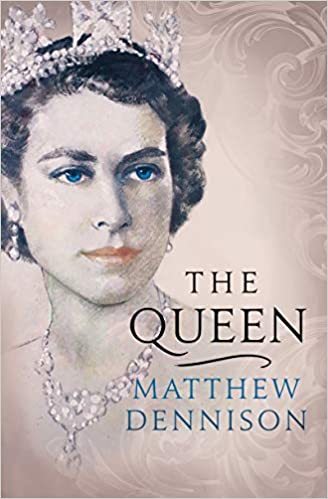
The Queen
Hardcover – 3 June 2021 (UK) & 1 September 2021 (US)
In this brand-new biography of the longest-reigning sovereign in British history, Matthew Dennison traces her life and reign across an era of unprecedented and often seismic social change. Stylish in its writing and nuanced in its judgements, The Queen charts the joys and triumphs as well as the disappointments and vicissitudes of a remarkable royal life; it also assesses the achievement of a woman regarded as the champion of a handful of ‘British’ values endorsed – if no longer practised – by the bulk of the nation: service, duty, steadfastness, charity and stoicism.
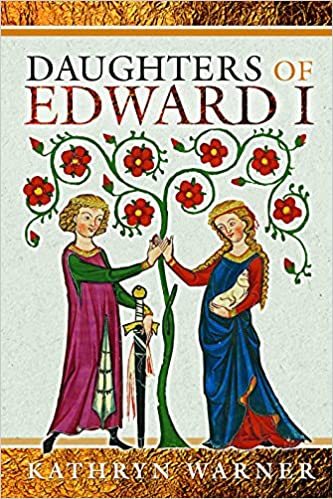
Daughters of Edward I
Hardcover – 30 July 2021 (UK) & 30 September 2021 (US)
In 1254 the teenage heir to the English throne married a Spanish bride, the sister of the king of Castile, in Burgos, and their marriage of 36 years proved to be one of the great royal romances of the Middle Ages. Edward I of England and Leonor of Castile had at least fourteen children together, though only six survived into adulthood, five of them daughters. Daughters of Edward I traces the lives of these five capable, independent women, including Joan of Acre, born in the Holy Land, who defied her father by marrying a second husband of her own choice, and Mary, who did not let her forced veiling as a nun stand in the way of the life she really wanted to live. The women’s stories span the decades from the 1260s to the 1330s, through the long reign of their father, the turbulent reign of their brother Edward II, and into the reign of their nephew, the child-king Edward III.
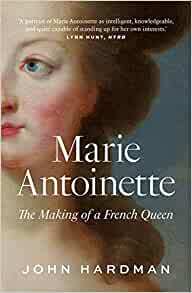
Marie-Antoinette: The Making of a French Queen
Paperback – 24 August 2021 (UK) & 28 September 2021 (US)
Who was the real Marie-Antoinette? She was mistrusted and reviled in her own time, and today she is portrayed as a lightweight incapable of understanding the events that engulfed her. In this new account, John Hardman redresses the balance and sheds fresh light on Marie-Antoinette’s story.
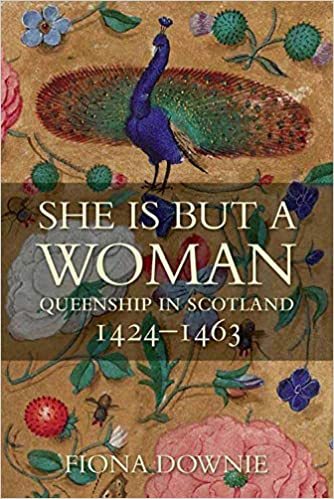
She is But a Woman: Queenship in Scotland 1424–1463
Paperback – 2 September 2021 (UK) & 2 November 2021 (US)
She is but a Woman, the first in-depth study of medieval Scottish queens, investigates the relationship between gender and power in the medieval Scottish court by exploring the art of queenship as practised by Joan Beaufort and Mary of Guelders, queens of James I and James II. These women were excluded from authority but clearly possessed power as wives and mothers of kings. They established and cultivated relationships with members of the court, learned about Scottish political life and supported their husbands in the business of government. The book examines for the first time the arrivals of Joan and Mary in Scotland, their social and political status, their relationships with their husbands and families, and their roles in international diplomacy.
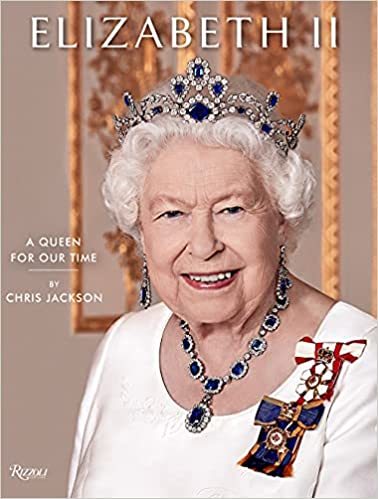
Elizabeth II: A Queen for Our Time
Hardcover – 14 September 2021 (US & UK)
For as long as many of us can remember, Queen Elizabeth II has been an omnipresent figurehead—an icon. As Head of the Commonwealth, she is respected and admired around the world in equal measure. Her stalwart presence has signaled stability, neutrality, and responsibility. Uniting all that is British as an ambassador and statesperson, Queen Elizabeth II has seen more of the planet and its people than any other head of state and has engaged with them like no other monarch in British history; she is unquestionably a global voice for our time. As a Getty Images royal photographer, Chris Jackson has been granted privileged access to the monarch and the British royal family. He has documented the Queen’s official engagements over the past two decades, during a period of seismic changes in the British monarchy.
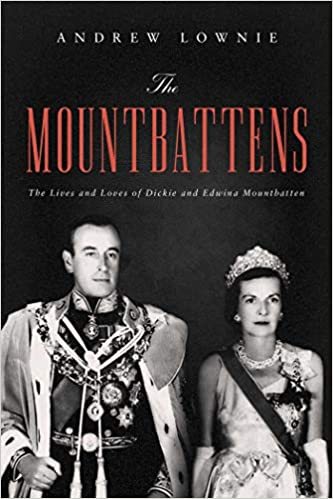
The Mountbattens: The Lives and Loves of Dickie and Edwina Mountbatten
Hardcover – 7 September 2021 (US & UK)
From British high society to the South of France, from the battlefields of Burma to the Viceroy’s House, The Mountbattens is a rich and filmic story of a powerful partnership, revealing the truth behind a carefully curated legend.
Was Mountbatten one of the outstanding leaders of his generation, or a man over-promoted because of his royal birth, high-level connections, film-star looks and ruthless self-promotion? What is the true story behind controversies such as the Dieppe Raid and Indian Partition, the love affair between Edwina and Nehru, and Mountbatten’s assassination in 1979?

Raised to Rule: Educating Royalty at the Court of the Spanish Habsburgs, 1601-1634
Paperback – 1 September 2021 (US & UK)
The children of Philip III of Spain (1578–1621) and Margarita de Austria (1584–1611) inherited great potential power: the abilities to declare war or make peace, to advocate religious doctrine, and to exert lasting influence over art, culture, and taste. The leadership provided by this generation raises the question of how royal families learned the roles they played in court, country, and on the international stage. In Raised to Rule, Hoffman presents a deeply researched and stimulating study of the formative experiences of children in the royal households of early modern Spain.
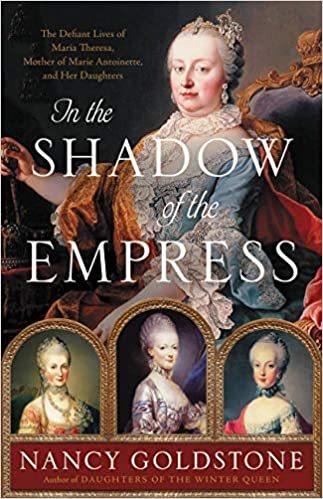
In the Shadow of the Empress: The Defiant Lives of Maria Theresa, Mother of Marie Antoinette, and Her Daughters
Hardcover – 21 September 2021 (US & UK)
Unfolding against an irresistible backdrop of brilliant courts from Vienna to Versailles, embracing the exotic lure of Naples and Sicily, this epic history of Maria Theresa and her daughters is a tour de force of desire, adventure, ambition, treachery, sorrow, and glory.

Domina: The Women Who Made Imperial Rome
Paperback – 14 September 2021 (US) & 22 September 2021 (UK)
A captivating popular history that shines a light on the notorious Julio-Claudian women who forged an empire
Augustus, Tiberius, Caligula, Claudius, and Nero—these are the names history associates with the early Roman Empire. Yet, not a single one of these emperors was the blood son of his predecessor. In this captivating history, a prominent scholar of the era documents the Julio-Claudian women whose bloodline, ambition, and ruthlessness made it possible for the emperors’ line to continue.
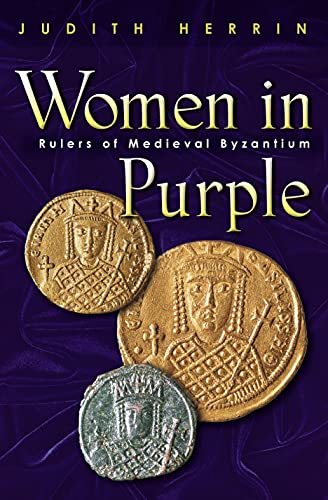
Women in Purple: Rulers of Medieval Byzantium
Kindle Edition – 14 September 2021 (US & UK)
In the eighth and ninth centuries, three Byzantine empresses–Irene, Euphrosyne, and Theodora–changed history. Their combined efforts restored the veneration of icons, saving Byzantium from a purely symbolic and decorative art and ensuring its influence for centuries to come.
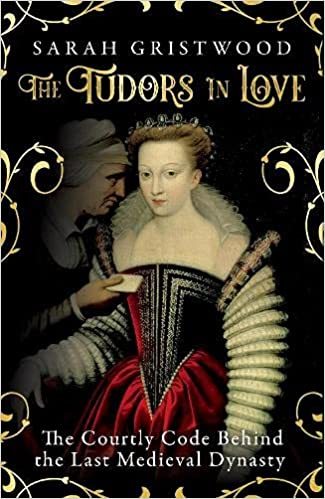
The Tudors in Love: The Courtly Code Behind the Last Medieval Dynasty
Hardcover – 23 September 2021 (UK) & unknown (US)
The dramas of courtly love have captivated centuries of readers and dreamers. Yet too often they’re dismissed as something existing only in books and song – those old legends of King Arthur and chivalric fantasy.
Not so. In this ground-breaking history, Sarah Gristwood reveals the way courtly love made and marred the Tudor dynasty. From Henry VIII declaring himself as the ‘loyal and most assured servant’ of Anne Boleyn to Elizabeth I’s poems to her suitors, the Tudors re-enacted the roles of the devoted lovers and capricious mistresses first laid out in the romances of medieval literature. The Tudors in Love dissects the codes of love, desire and power, unveiling romantic obsessions that have shaped the history of this nation. In the #MeToo era, re-examining the history of the social codes behind modern romance has never been more vital.
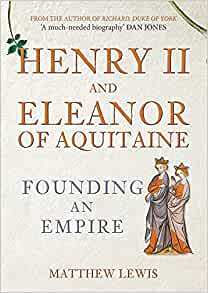
Henry II and Eleanor of Aquitaine: Founding an Empire
Hardcover – 15 September 2021 (UK) & 1 October 2021 (US)
Henry II became King of England in 1154 after twenty years of civil war. He was the first Plantagenet king, the founder of England’s most successful and longest-ruling dynasty. But Henry did not come to the throne alone. He had married Eleanor of Aquitaine, a feisty, formidable and powerful woman ten years his senior. Eleanor had spent fifteen years married to Louis VII of France before he divorced her, only to be angered when she married his young rival. Together, they were a medieval power couple who soon added the ultimate rank of king and queen consort to their list of titles. With them, the Angevin Empire was born. Over the decades, a wedge was driven between the king, fiercely protective of his empire, and Eleanor, who felt restrained in her husband’s shadow. Henry imprisoned his wife, fought his elder sons and pinned his hopes on his youngest, whose betrayal was the last straw. This book charts the early lives of Henry and Eleanor before they became a European power couple and examines the impact of their union on contemporaries and European politics. It explores the birth of the Angevin Empire that spread from Northumberland to the Mediterranean, and the causes of the disintegration of that vast territory, as well as the troublesome relationships between Henry and his sons, who dragged their father to the battlefield to defend his lands from their ambitious intriguing.
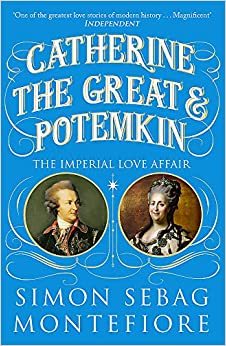
Catherine the Great and Potemkin: The Imperial Love Affair
Paperback – 2 September 2021 (UK) & unknown (US)
It was history’s most successful political partnership – as sensual and fiery as it was creative and visionary. Catherine the Great was a woman of notorious passion and imperial ambition. Prince Potemkin – wildly flamboyant and sublimely talented – was the love of her life and her co-ruler.
Together they seized Ukraine and Crimea, defining the Russian empire to this day. Their affair was so tumultuous that they negotiated an arrangement to share power, leaving Potemkin free to love his beautiful nieces, and Catherine her young male favourites. But these ‘twin souls’ never stopped loving each other.
Drawing on their intimate letters and vast research, Simon Sebag Montefiore’s enthralling, widely acclaimed biography restores these imperial partners to their rightful place as titans of their age.
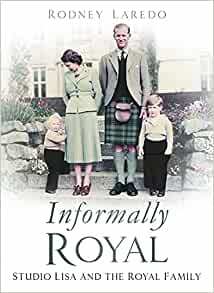
Informally Royal: Studio Lisa and the Royal Family 1936-1966
Paperback – 1 September 2021 (UK) & unknown (US)
A chance meeting in 1936 gave Lisa and Jimmy Sheridan the opportunity of a lifetime. Keen amateur photographers, their company Studio Lisa was engaged by the then Duke and Duchess of York to take casual photographs of their family, including the Princesses Elizabeth and Margaret, at their homes Royal Lodge and at 145 Piccadilly, London. At a time of traditional formality, when it was unheard of for mere unknowns to be given such an opportunity, the hiring of Studio Lisa proved to be a revolutionary and popular move on the part of the royals as it humanised them in the eyes of their subjects. They soon struck up an unlikely friendship with Lisa and Jimmy – a friendship that would span over 30 years and yield 13 separate photographic sessions, the last of which included Queen Elizabeth’s young children. This volume charts the story of Studio Lisa, from its humble beginnings right through to the granting of two Royal Warrants. For the first time Studio Lisa’s cache of remarkable royal photographs is brought together, producing a marvellous collector’s item and a treasure thankfully preserved for posterity.
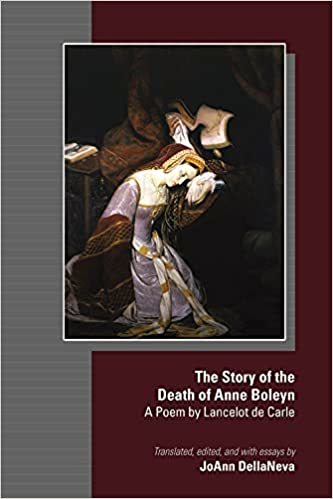
The Story of the Death of Anne Boleyn – A Poem by Lancelot de Carle (Medieval and Renaissance Texts and Studies)
Paperback – 10 September 2021 (UK & US)
The Story of the Death of Anne Boleyn is a critical edition and translation of a long narrative poem written by the secretary to the French ambassador in London within two weeks of Anne Boleyn’s execution. It was intended as a diplomatic dispatch, relating the astonishing news of the queen’s demise (along with that of five alleged lovers). Uniquely among diplomatic correspondence, this dispatch was written in verse form. It thus straddles the domains of literature and history, of chronicle and fiction.
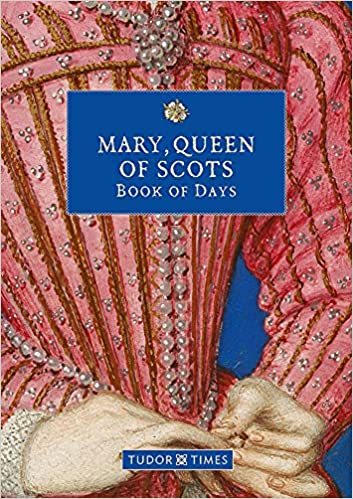
Mary, Queen of Scots Book of Days
Hardcover – 9 September 2021 (UK) & 1 January 2022 (US)
Hugely informative and stunningly produced, the Mary, Queen of Scots Book of Days pairs a practical perpetual diary with a wealth of material on the life and times of Mary, Queen of Scots (1542 -1587). The first woman to be crowned as a queen regnant in the British Isles, her tumultuous life and tragic end has fascinated people for centuries.
Each of the 365 days of the calendar year has the date, but not the day, of the month, allowing the owner to record events and reminders over many years.
The linen-effect cover reproduces a detail from François Clouet’s Portrait of Mary, Queen of Scots (circa 1558), courtesy of the Royal Collection Trust, with the interior printed on Munken Pure paper, perfect for writing, and completed with a ribbon bookmark.
The high-quality production and luxurious feel make this an ideal gift item for anyone with an interest in the\nTudor and Stewart history.

Who Ruled Tudor England: Paradoxes of Power
Hardcover – 9 September 2021 (UK & US)
Henry VIIIs wives, his watershed break with Rome, Marys bloody persecution of Protestants and Elizabeths fearless reign have been immortalised in history books and the public consciousness. This book addresses widens the scope of established historiography by examining the dynamics of Tudor power and assessing where power really lay. By considering the roles of the monarch, church and individuals it sheds a fascinating light on the study of government in sixteenth-century England. Addressing different aspects of how Tudor England was governed, the twelve chapters discuss who participated in that government, and the extent of their power and governance. Paying close attention to the scholars who have shaped perceptions of major Tudor political figures this book re-situates the dynamics of Tudor power and its historiography.
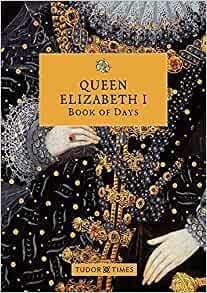
Queen Elizabeth I Book of Days
Hardcover – 7 September 2021 (UK) & 1 January 2022 (US)
Hugely informative and stunningly produced, the Elizabeth I Book of Days pairs a practical perpetual diary with a wealth of material on the life and times of the last Tudor queen, Elizabeth I (1533-1603), one of England’s most iconic and celebrated monarchs.
Each of the 365 days of the calendar year has the date, but not the day, of the month, allowing the owner to record events and reminders over many years.
The linen-effect cover reproduces a detail from William Segar’s Ermine Portrait of the queen (1585), courtesy of Hatfield House, with the interior printed on Munken Pure paper, perfect for writing, and completed with a ribbon bookmark. The high-quality production and luxurious feel make this an ideal gift item for anyone with an interest in the Tudor period.

Boudica Britannia
Paperback – 30 September 2021 (US & UK)
When Roman troops threatened to seize the wealth of the Iceni people, their queen, Boudica, retaliated by inciting a major uprising, allying her tribe with the neighbouring Trinovantes. The ensuing clash is one of the most important – and dramatic – events in the history of Britain, standing testament to what can happen when an insensitive colonial power meets determined resistance from a subjugated people head-on.
In this fascinating account of a legendary figure, Miranda Aldhouse-Green raises questions about female power, colonial oppression, and whether Boudica would be seen today as a freedom fighter, terrorist or martyr.
The post Book News September 2021 appeared first on History of Royal Women.
The Boleyns: A Scandalous Family – Episode 2
The post The Boleyns: A Scandalous Family – Episode 2 appeared first on History of Royal Women.
A first look at The Great (Season 2)
Hulu has given us a glimpse at the second season of The Great and a release date as well. The second season will begin on 19 November 2021.
The post A first look at The Great (Season 2) appeared first on History of Royal Women.



